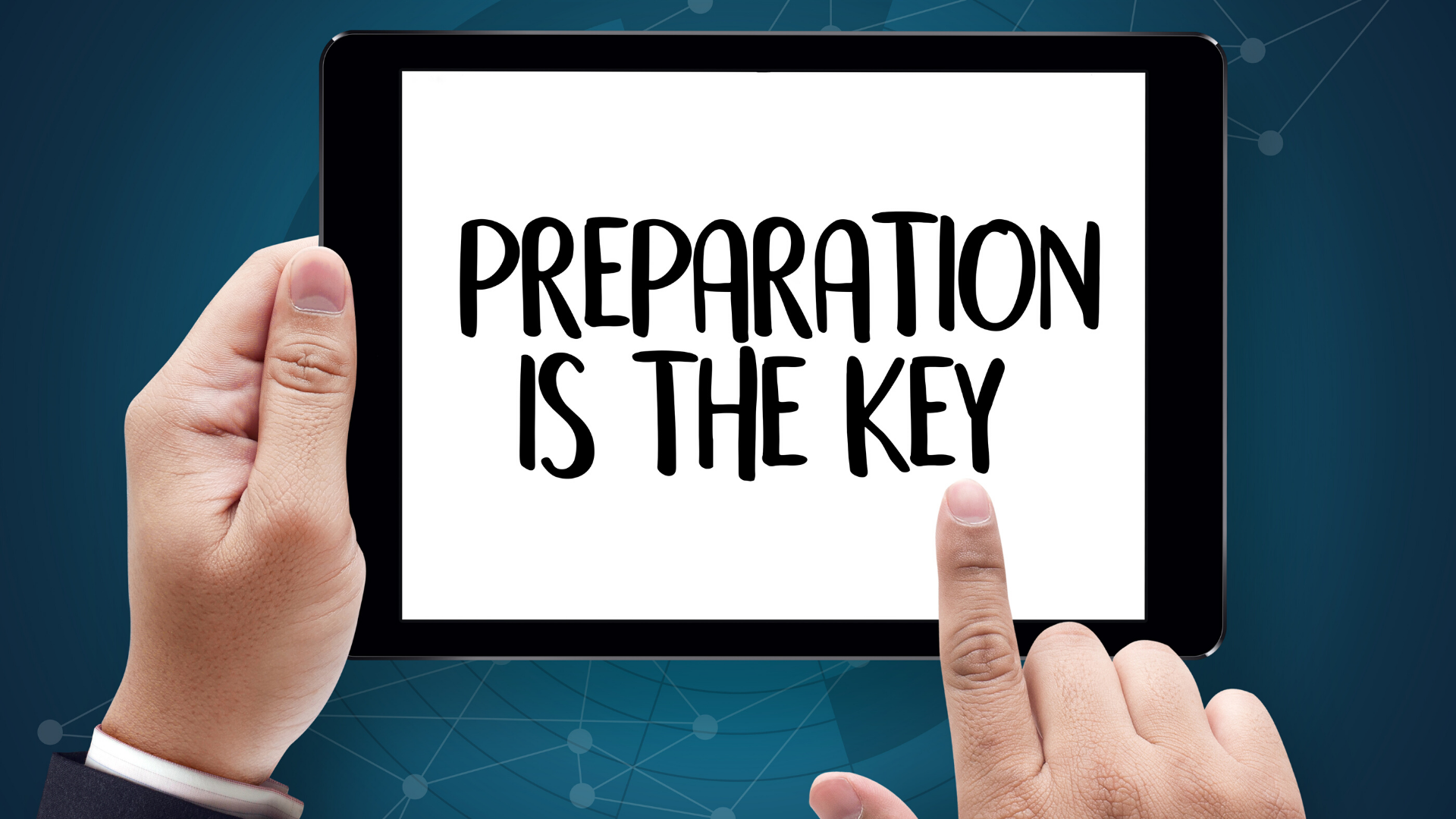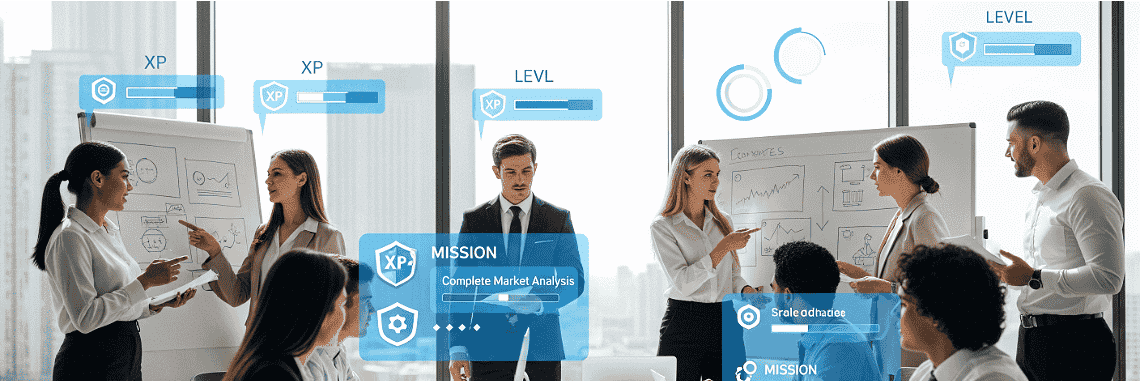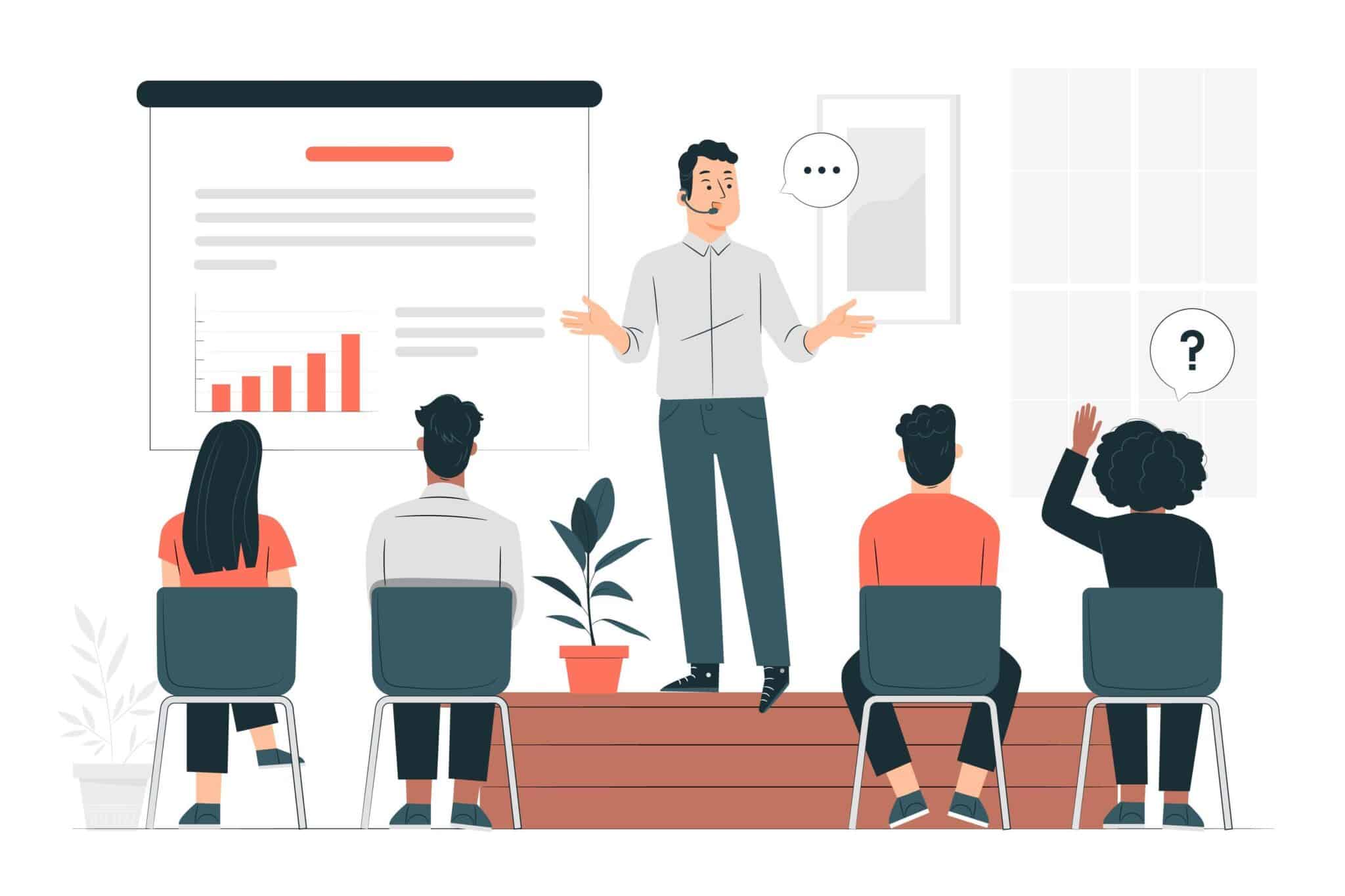The Ultimate Guide to Facilitating Online Sessions That Inspire and Engage
Table of Contents
I’m sure you’ve been there. You log into a virtual meeting, and within minutes, you can feel the energy drain from the virtual room. Muted microphones, black screens, and a presenter talking into the void. It’s a familiar story in our new world of work, where physical distance can easily become emotional distance. For a long time, I believed that the key to a better online session was better technology. A fancier camera, a new polling software, a faster internet connection. But I was wrong.
After years of leading sessions for teams around the world, I’ve learned that the secret to truly effective virtual facilitation isn’t about the tools you use. It’s about the human connection you create. It’s about transforming a monologue into a dialogue and turning a passive audience into active participants.

This isn’t just another list of tips. This is a comprehensive guide to help you master the art and science of online facilitation. We’ll walk through everything from the crucial preparation phase to the art of engaging your audience and ensuring the impact lasts long after the session ends. Let’s move beyond simply presenting online and start creating experiences that inspire, engage, and connect.
Part 1: The Foundation – Mastering Your Mindset and Environment
Before you even think about your agenda or your slide deck, the most important preparation happens within you and in your physical space.

Beyond the Camera: Adopting a Facilitator’s Mindset
The biggest mistake I see people make is showing up as a presenter. A presenter’s job is to transmit information. A facilitator’s job is to guide a process, unlock the wisdom in the room, and create an environment where everyone feels seen, heard, and valued. This requires a fundamental mindset shift. You are not the “sage on the stage”; you are the “guide on the side.” This means focusing less on what you are saying and more on what the participants are experiencing. Are they engaged? Are they confused? Are they connecting with each other? Cultivating this mindset of empathy and curiosity is the first step toward becoming a world class virtual facilitator. It’s about nurturing a growth mindset in yourself and your participants.
Also read: How to Nurture Growth Mindset in Your Organisation
Setting Your Digital Stage
Your virtual presence begins before you say a word. Your environment sends a powerful message about your professionalism and preparedness. You don’t need a Hollywood studio, but a few small adjustments can make a huge difference.
- Lighting is Everything: The best light source is natural light from a window in front of you. If that’s not possible, a simple ring light can prevent you from looking like a silhouette. Good lighting builds trust because it allows people to see your expressions clearly.
- Audio Above All: People will forgive grainy video, but they will not tolerate bad audio. A quality external microphone, even an affordable one, is the single best investment you can make. It ensures your voice is clear, crisp, and free of distracting background noise.
- Conscious Backgrounds: Your background should be clean and professional. A simple bookshelf or a non distracting piece of art works well. If you use a virtual background, choose a high quality, simple image. A blurry or pixelated background can be very distracting. The goal is to have the focus be on you, not what’s behind you.
Part 2: Before the Session – The Blueprint for Success
Great facilitation looks effortless, but it’s the result of meticulous planning. Rushing this stage is the surest way to host a session that falls flat.
Start with ‘Why’: Defining Your Purpose and Outcomes
Why does this session exist? What should be different by the end of it? Before you plan any activities, get crystal clear on your purpose. Write down one single sentence that captures the core objective. Then, list 3 to 5 concrete, measurable outcomes. For example, instead of “Discuss the new marketing plan,” an outcome would be, “Participants will be able to articulate the top three priorities of the new marketing plan and identify one action they will take to support it.” This clarity will be your North Star for every decision you make.
Know Your Audience
Who are you facilitating for? Are they senior leaders or new hires? Are they highly analytical or creative thinkers? How comfortable are they with the technology you plan to use? A quick pre session survey can be invaluable. Asking a simple question like, “What is one thing you hope to get out of this session?” can provide incredible insight and help you tailor the content to their specific needs.
Designing an Engaging Agenda
A great virtual agenda is more than a list of topics. It’s a journey that you guide your participants on. A common rule I follow is to change the format or “state” every 20 minutes to fight virtual fatigue.
Here’s a simple structure to follow:
- Opener (10 mins): Welcome, set the stage, and run a quick icebreaker to get people talking.
- Core Content Block 1 (20 mins): Introduce a key concept. Use visuals and stories.
- Interactive Activity 1 (15 mins): Move them into a breakout room for a small group discussion.
- Debrief (10 mins): Bring everyone back to share key insights.
- Break (5 mins): A quick bio break is essential for longer sessions.
- Core Content Block 2 (20 mins): Introduce the next concept.
- Interactive Activity 2 (15 mins): Use a poll or a virtual whiteboard for a different kind of interaction.
- Closing (10 mins): Summarize takeaways, outline next steps, and close on a high note.
The Tech Rehearsal: Your Pre-Flight Checklist
Never use a tool for the first time in a live session. Do a full run through of every technical element. Open your slides, launch your polls, practice setting up breakout rooms, and test your audio and video. If possible, ask a colleague to log in with you to test the participant experience. This rehearsal will not only prevent technical glitches but will also boost your confidence, allowing you to focus on the people, not the platform.
Part 3: During the Session – The Art of Virtual Engagement
This is where your preparation pays off. Now it’s time to lead the session with presence and energy.

The First Five Minutes: Setting the Tone
The first five minutes are the most critical. This is your chance to build an environment of trust and psychological safety. Start with a warm, authentic welcome. Smile. Make eye contact with the camera. I recommend starting with a simple check in question in the chat, like “Where are you joining from today?” or “What’s one word to describe your week so far?” This immediately gets people participating. Clearly state the purpose of the session and the agenda so everyone knows what to expect.
Also read: How Leaders Can Foster Psychological Safety at Work
Keeping Energy High and Fighting Virtual Fatigue
Sitting and staring at a screen is draining. As a facilitator, you are the energy source for the room.
- Vary Your Vocal Tone: Avoid a monotone delivery. Vary your pace, pitch, and volume to keep things interesting.
- Use State Changes: Don’t let people just sit and listen for too long. Ask them to stand up and stretch. Have them type in the chat. Send them to breakout rooms. These small shifts reset attention spans.
- Leverage Music: Playing upbeat, instrumental music during breaks or as people are joining can instantly lift the mood of the session.
The Magic of Breakout Rooms
Breakout rooms are the single most powerful tool for engagement in a virtual setting. They turn passive listeners into active contributors. For many people, it is much safer to speak in a small group of three or four than in front of a large group. To make them effective, give very clear instructions. Write the task or question in the chat so they can refer to it. Give them a specific time limit and a clear deliverable, such as “appoint one person to share your group’s top idea when we return.” Effective breakouts are a key part of fostering cross functional collaboration.
Reading the Digital Room
One of the biggest challenges of virtual facilitation is the lack of non verbal cues. However, you can learn to read the “digital body language.” Pay attention to the chat. Is it active and lively, or is it silent? Are people turning their cameras on or off? Are they leaning in or are their eyes darting around? Don’t be afraid to do a quick “temperature check.” You can simply ask, “On a scale of 1 to 5, how is our pace so far? Type your number in the chat.” This gives you real time data to adjust your approach.
Part 4: After the Session – Ensuring the Learning Sticks
The facilitator’s job doesn’t end when the meeting does. A strong follow up strategy is crucial for turning insights into action.

The Art of the Follow-Up
Within 24 hours, send a follow up email to all participants. Don’t just send the slides. Your email should include:
- A genuine thank you for their participation and contribution.
- A concise summary of the key decisions or takeaways.
- A list of clear action items, with names and deadlines assigned.
- A copy of the slides or any resources mentioned.
Gathering Feedback for Growth
Every session is a learning opportunity for you as a facilitator. A simple, anonymous survey with two or three questions can provide invaluable feedback. Ask questions like, “What was the most valuable part of the session?” and “What is one thing that could have made this session even better?” This demonstrates that you value their opinion and are committed to continuous improvement. Learning how to give and receive feedback is a cornerstone of professional growth.
Also read: How To Give Effective Feedback
Common Challenges & How to Handle Them
- What if my technology fails? It will. The key is to have a backup plan. Have a co facilitator who can take over, save your presentation as a PDF you can easily share, and know how to use your phone’s hotspot if your internet drops. Most importantly, stay calm. Acknowledge the issue with a bit of humor and move on.
- How do I handle a totally disengaged group? Don’t call people out. Instead, make participation safer. Switch to an anonymous poll or whiteboard activity. Use small breakout rooms where people are more likely to talk. You could also try asking a direct but open ended question like, “I’d love to hear a different perspective on this topic. Who has a thought they’d be willing to share?”
- How do I manage time effectively? Use a visible timer for activities. Appoint a participant to be the official timekeeper. If a discussion is valuable but running long, acknowledge it. Say, “This is a fantastic conversation. Do we want to spend 10 more minutes on this and agree to shorten our next topic, or should we stick to the agenda?” This empowers the group to make a conscious choice.
Your Journey as a Facilitator
Becoming a great virtual facilitator is a journey, not a destination. It’s a skill built on a foundation of preparation, a mindset of empathy, and a commitment to creating human connection across digital divides. The tools and platforms will continue to change, but the principles of engaging people, fostering psychological safety, and guiding a group toward a common goal will always remain.

Takeaway for Today’s Leaders: In a world of hybrid and remote work, the inability to run engaging online sessions is no longer a minor inconvenience. It is a direct barrier to team cohesion, effective training, and innovation. It leads to disengagement, miscommunication, and a weakened culture. By mastering the skills of virtual facilitation, you can directly address this challenge of digital disconnection, turning screen time into a powerful tool for building stronger, more collaborative, and more aligned teams.
Ready to empower your teams with the skills they need to thrive in a virtual world? At FocusU, we design learning experiences that help leaders and teams connect and collaborate effectively, no matter the distance. Explore our solutions to see how we can help you build a more engaged and effective organization.








